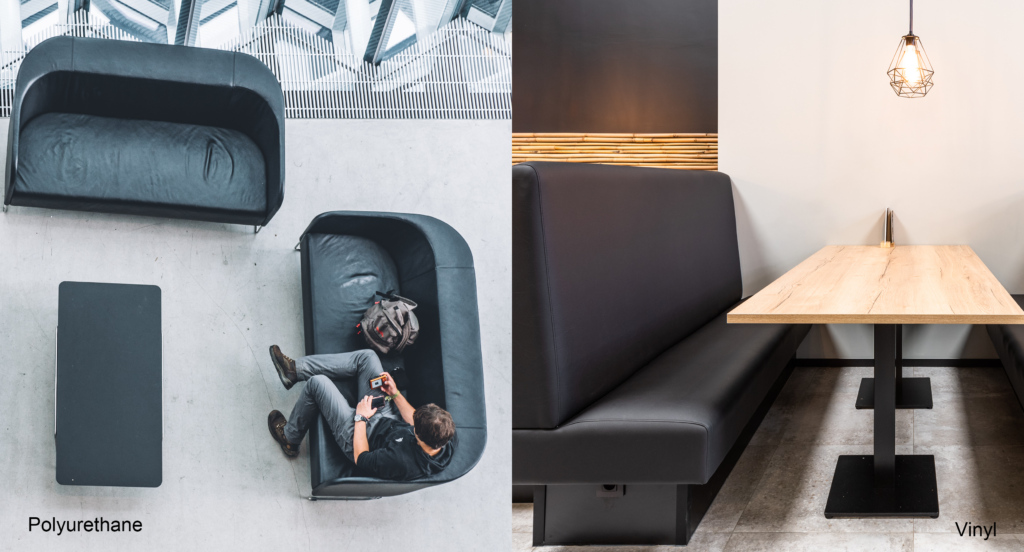 There is a lot of information out there about polyurethane as an upholstery cover, but not so much about vinyl. Both are effective, man-made coated fabrics used in a wide variety of settings, and both form an impenetrable barrier between user and product.
There is a lot of information out there about polyurethane as an upholstery cover, but not so much about vinyl. Both are effective, man-made coated fabrics used in a wide variety of settings, and both form an impenetrable barrier between user and product.So where do they differ? Here’s a look at how the two materials stack up:
Durability Vinyl has been proven to last years longer in the field than polyurethane, which succumbs to moisture loses elasticity over time.
Vinyl is not susceptible to water or moisture from occupants. That is why vinyl is used in swimming pool liners and for window frames and vinyl siding. With the correct topfinish, many vinyl fabrics feel like natural leather. Interestingly, all major automotive companies have replaced all polyurethane and most leather upholstery with vinyl fabrics.
Cleanability With the COVID-19 pandemic making it critical to properly disinfect surfaces, cleanability has become one of the most important characteristics of upholstered surfaces. Vinyl is highly cleanable, standing up to the rigors of bleach and quaternary ammonia. In contrast, polyurethane is vulnerable to many cleaning agents and disinfectants, making it more difficult to clean without damaging the material, resulting is fading, flaking and brittleness.
That cleanability, along with vinyl’s ability to serve as an effective barrier against germs, has made it invaluable for use in personal protection equipment, protecting medical professionals from some of the most virulent diseases in the world.



